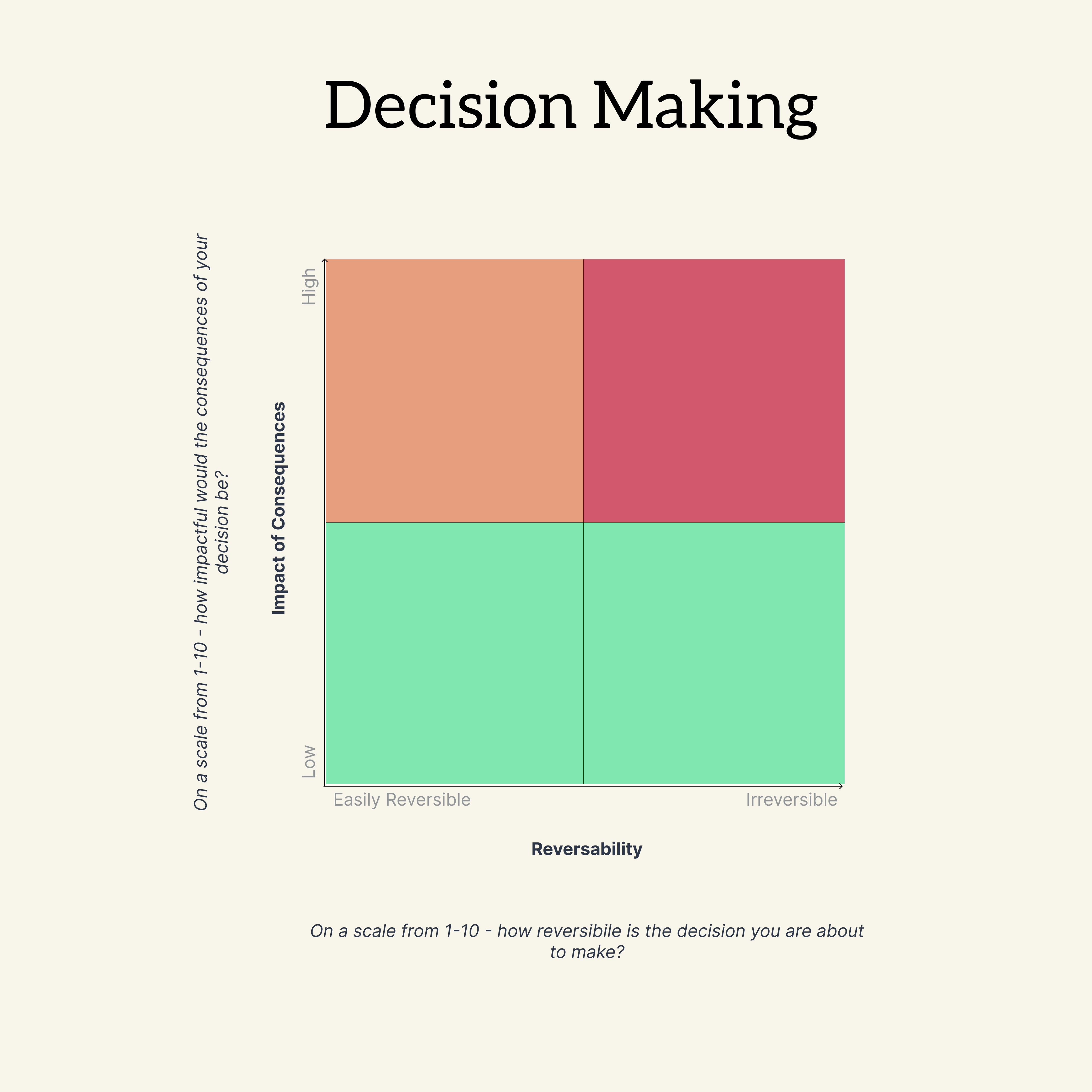Decision-Making: The Art of Choosing Wisely
Hey there, fellow decision-makers! Yes, we all are.
Have you ever stopped to think about defining a clear process about how to face the decisions we make every day? Turns out, good thinking isn’t something that just happens by chance — it takes effort.
The different Flavors of Decision-Making
Of course, there are different flavors of decision-making we encounter:
The Golden Dilemma
Imagine finding yourself between two delicious options — like choosing between pizza or sushi for dinner. Both are mouthwatering good, and both bring their own set of joyous benefits to the table.
The Dark Choice
Then there are times when the options are, let’s say, less appetizing. Imagine having to choose the lesser of two evils. It’s not pretty, but life throws these curveballs, and we’ve gotta swing with it.
The Hidden Gem
Sometimes the best choice isn’t the one staring you in the face. It’s like finding that one perfectly ripe avocado in the heap. It requires a second glance, but once you spot it, the decision shines clear and bright.
The Black & White
And then there’s the no-brainer. The choice is clear as day — it’s like deciding between spending a day at the spa or a day at the dentist (unless you’re strangely passionate about dental hygiene, that is).
How to Approach Decisions
And then, once we start talking about a proper process for decision-making, there is something super neat: decision automation. It’s like setting up autopilot for the decisions we do not want to waste energy on again and again. It banishes the internal debate we so often face with ourselves.
No matter what type of decision you’re facing — be it a daily habit or a life-altering choice — the underlying strategy remains consistent. All decisions should be treated with the same respect. Even small decisions add up over time. So I think we should base our decisions on the same core principles and questions.
Do a Quick Body and Mind Check
It’s like making sure you’re hydrated before running a marathon. Are you in the right physical and mental state to make a decision? Have all the necessary info on hand?
What’s the Deadline?
Can you hit pause and buy yourself some thinking time? Till when do you have to make the decision? Can you extend the deadline and ask for more time? Would extending the deadline cost you anything?
Identify the Problem to Solve
Every decision is a key to a problem’s lock. It’s crucial to get a laser-beam focus on the actual issue you’re tackling — that’s half the battle won right there.

ASAP or ALAP?
ASAP — As Soon As Possible
Do you need to act swiftly, or can you afford to let the idea marinate? Quick and reversible decisions should be dealt with… well, quickly! Get them out of the way, maybe even pass ’em off to someone else.
ALAP — As Long As Possible
These decisions have high consequences and are not easily reversible. Those are the ones you want to spend a lot of time thinking about to get it right. Things you might want to consider are
- Based on which criteria are you deciding? Which ones are the most important for your decisions? (Prioritize them)
- Which information are you missing? Which information would make it easier to decide?
- Besides the options you have already considered, are there any other possible options? These could be combinations of options, or even missing information about an option that you could gain by talking to an expert on the subject.
- What is your margin of safety? Determine what resources need to be utilized to avoid the worst case scenario and/or to rebuild from the worst case scenario.
Decision-making stands at the heart of designing a life we want to live. Every choice we make serves as a powerful tool, constructing the intricate mosaic of our personal and professional journeys.
Making wise, well-informed choices can elevate our growth, enhance relationships, and lead to fulfilling outcomes. Our decisions weave the threads that can turn aspirations into realities. Mastering the art of decision-making isn’t just a formidable skill; it’s a necessity that dictates the quality of our lives and the impact we leave on the world.
That is, why I’ve been thinking about developing a product that facilitates this whole process of decision-making. I might integrate it into Tibah. For now, I created a Figma prototype — all rough around the edges, but it’s got brains! Though it’s not winning any design awards just yet, it’s up and running. If interested, check it out here
Making decisions doesn’t have to feel like you’re stumbling in the dark and going for your “best guess”. With a little process and introspection, we can turn the art of choice into a well-oiled machine.